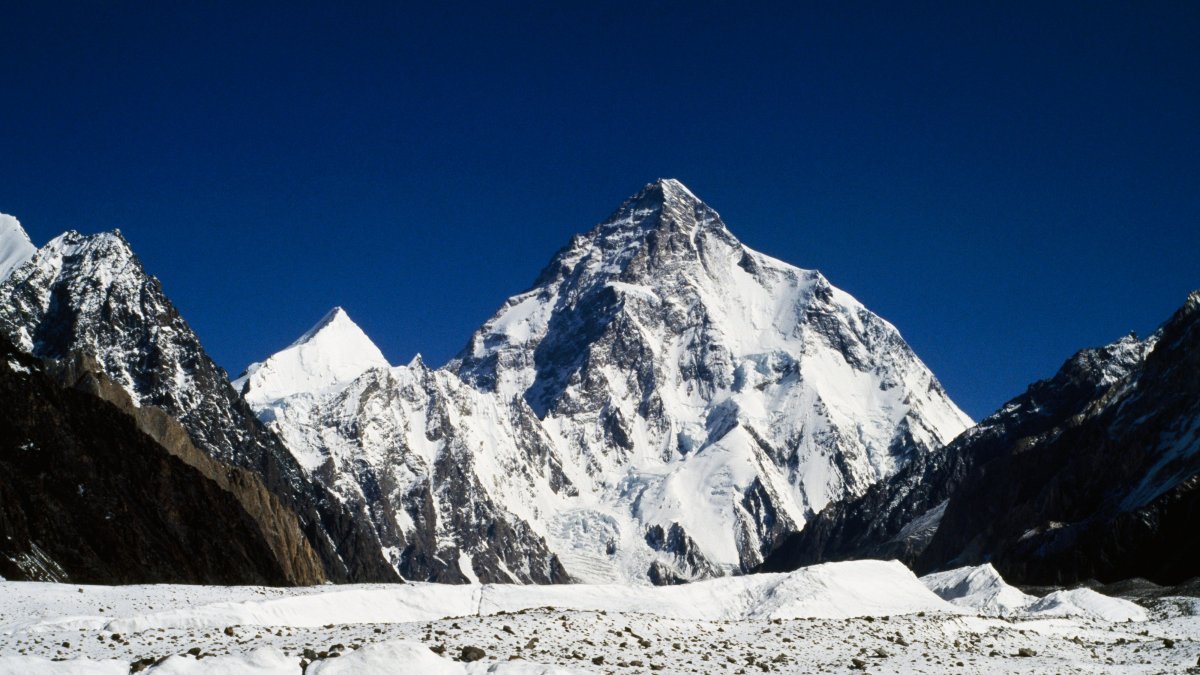No products in the cart.
Outdoor Adventure
A Nepali Team Just Made the First Winter Ascent on K2
In the winter of 1987 to 1988, 13 Polish climbers, seven Canadians, and four Britons attempted to make the first winter summit of K2, the world’s second-highest mountain. The 28,251-foot peak is steeper, more technical, and deadlier than Everest, earning it the nickname “The Savage Mountain.” The team quickly established the low camps, but progress stalled as the climbers went higher. The expedition had only ten days of good weather during the effort. After three months, they canceled the entire outing. Over the next three decades, five more winter expeditions—made up of some of the hardiest mountaineers in the world—similarly failed. The mountain was too cold, there was too much wind and snow, and it was just too difficult and dangerous to get to the top. After every other 8,000-meter peak had been climbed in winter, K2 sat alone, one of the last big prizes in mountaineering.
Until now. At 5:00 P.M. local time on Saturday, January 16, a team of ten Sherpas and Nepalis stood on K2’s summit, located on the border between Pakistan and China. While most first summits have a name attached to the feat—like Sir Edmund Hillary on Everest—this group credited the team, rather than an individual, with the first ascent. They sang the Nepali national anthem on the summit in celebration.
The team, led by Mingma Gyalje Sherpa and Nirmal Purja Pun Magar, took advantage of a short weather window when the wind died down to below ten miles per hour—a level of calm unheard of for K2 during the summer, much less the winter. Also on the team were Gelje Sherpa, Mingma David Sherpa, Mingma Tenzi Sherpa, Dawa Temba Sherpa, Pem Chhiri Sherpa, Kilu Pemba Sherpa, Dawa Tenjing Sherpa, and Sona Sherpa. They have safely descended to Camp 3 and will return to Base Camp on Sunday.
Historically, Polish, Russian, and Italian climbers have dominated winter attempts on the 8,000-meter mountains, so this all-Nepali team was motivated not only to summit but to make a statement that Nepali and Sherpa climbers are among the best in the world. Before leaving Nepal for Pakistan, Mingma Gyalje Sherpa, who owns the guiding company Imagine Nepal, said that the climb was for a nation and their mountaineering pride. “For all the other 8,000ers summits in winter, no Sherpa was with them, so this is an opportunity for Sherpa to demonstrate their strength,” he said. “Besides alpinists, all the climbers take help from Sherpa to fulfill their dreams of 8,000-meter peaks. I have helped several foreign climbers to get to the summit of different 8,000ers. I was a little surprised to see no Sherpa on a winter first ascent. So this climb is for all the Sherpa community who are so known because of our friends and clients from different foreign countries.”
Mingma Gyalje Sherpa is an IFMGA/UIAGM certified mountain guide who began his mountaineering career in 2006 with an attempt on Mount Manaslu. Today, he has 22 summits on 8,000-meter peaks. Then there’s Nirmal Purja Pun Magar. Purja, who goes by Nims, is well known in the mountaineering world. He made a name for himself in 2020 by summiting all 14 of the 8,000-meter peaks in a blazing fast six months and six days. (The previous record was seven years, 11 months, and 14 days, set by Jerzy Kukuczka in 1987.) Nims used supplemental oxygen on all but one of the 14 summits. He has over 20 summits of 8,000-meter peaks. Nims and Mingma Gyalje Sherpa are the only people with both summer and winter ascents of K2.
So how did this Nepali national team accomplish what so many other world-class expeditions could not? My opinion is that they worked as a unified group to get the camps and the fixed lines in early, and then got lucky with the weather, especially on the summit push. With wind chills at a frigid -80 degrees Fahrenheit, there were enough days to acclimatize and establish the camps, and then on summit day, the windchill was more manageable at -40 degrees Fahrenheit. Also, they were able to stay healthy and avoid the objective dangers of avalanches and rockfall. The ten-person crew—which had more than 100 combined summits of 8,000-meter peaks—created a strong support team, using supplemental oxygen to break trail and put in the fixed safety lines.
In addition to the Nepali and Sherpa team, a large commercial group made up of more than 50 people is also on the mountain, far more than in years past. There are many on the commercial team who lack winter 8,000-meter experience. However, several are world-class climbers, including Italian Tamara Lunger. Controversial American polar explorer Colin O’Brady is also on the commercial team permit. The remaining climbers currently at K2 Base Camp will wait for the next weather window, expected later in January.
Despite the historic success of this expedition, K2 also offered a reminder of why it is one of the most treacherous mountains in the world. While the Nepali and Sherpa team was pushing for the summit, Spanish climber Sergi Mingote fell while returning to Base Camp after a successful acclimation rotation. He died from his injuries.
Support Outside Online
Our mission to inspire readers to get outside has never been more critical. In recent years, Outside Online has reported on groundbreaking research linking time in nature to improved mental and physical health, and we’ve kept you informed about the unprecedented threats to America’s public lands. Our rigorous coverage helps spark important debates about wellness and travel and adventure, and it provides readers an accessible gateway to new outdoor passions. Time outside is essential—and we can help you make the most of it. Making a financial contribution to Outside Online only takes a few minutes and will ensure we can continue supplying the trailblazing, informative journalism that readers like you depend on. We hope you’ll support us. Thank you.
Source link

